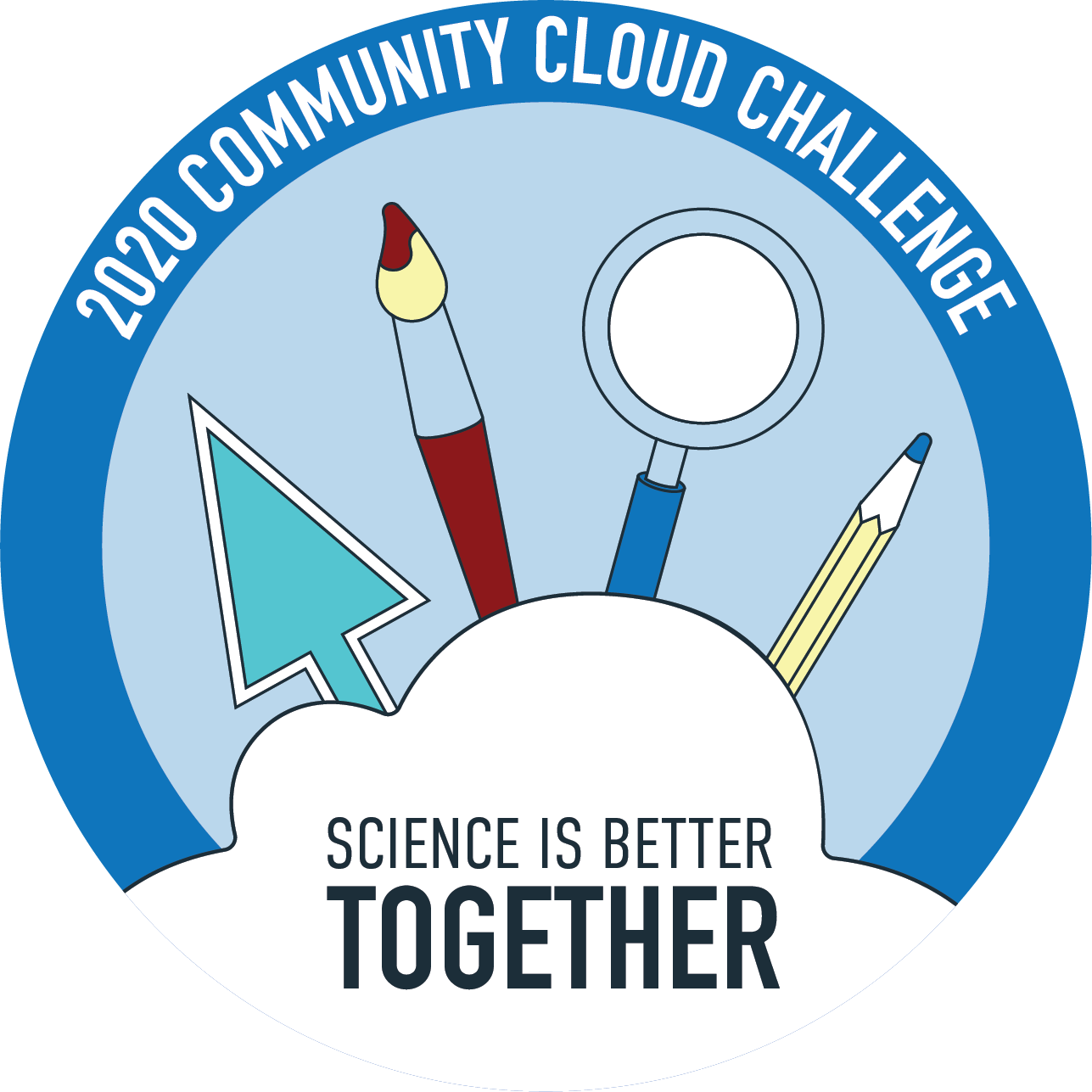Community Cloud Challenge 2020 - GLOBE Observer
2020 Community Cloud Challenge: Science is Better Together
15 July 2020 to 15 August 2020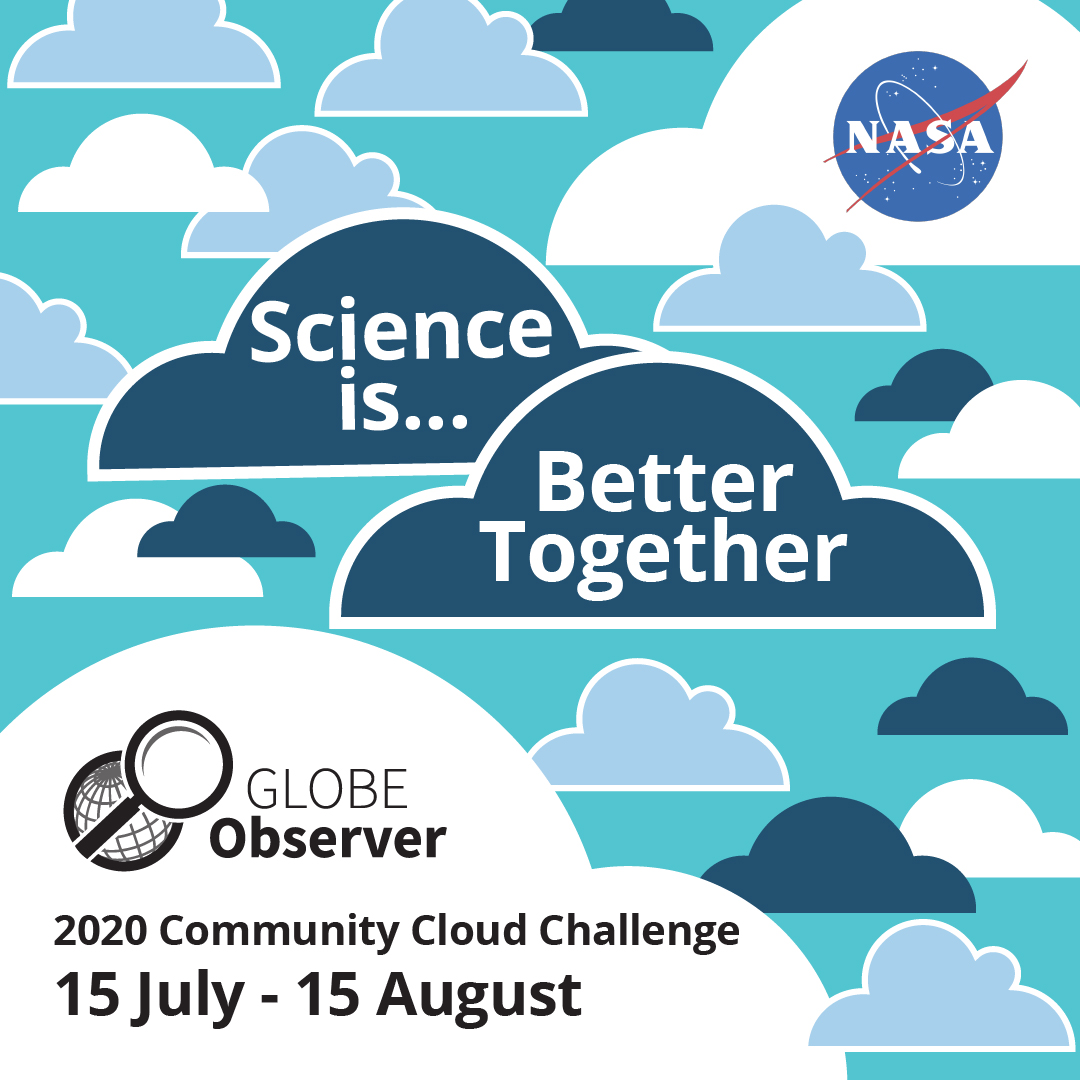
Short link to this page: https://observer.globe.gov/cloud-challenge-2020
Who can participate: Everyone! (students and teachers at all grade levels, informal educators, and the public in GLOBE countries)
How to Participate: Spend summer (or winter if you're in the Southern Hemisphere) together by discovering clouds from a new perspective. There are many ways to participate. Learn more about clouds with NASA scientists and educators each Thursday on NASA Earth’s Facebook page, do at-home activities, or take cloud or sky observations through the Clouds tool on GLOBE or the GLOBE Observer app. It is all up to you! Show how you took part in this unique event by sharing on social media.
The 2020 Community Cloud Challenge has concluded. Download a badge, shareables (square and rectangular), and a customizable certificate (PDF) to celebrate your participation. Print or share on social media, and thanks for joining in! Read the challenge summary news article for a wrap-up of the event and a thank you video for participants.
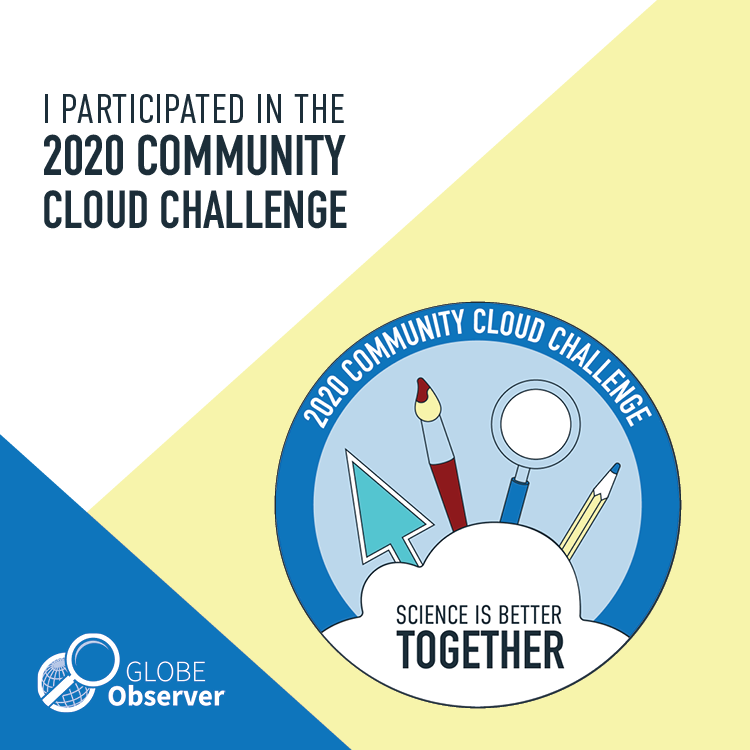 |
Challenge Weekly Themes
Every Thursday you will get a chance to learn more about clouds from NASA scientists. Watch the video premiere on Facebook (@NASAEarth) at 9:00 PT/12:00 ET (16:00 UTC) and ask questions in the comments. Each week will also feature an activity that can be done at home. Click each topic below to learn more, and find a link to the videos once they are premiered. NOTE: Due to the Mars Perseverance launch on July 30th, the video that week will be premiered on July 31st instead.
Science Topic: Satellite Matches to GLOBE Cloud Observations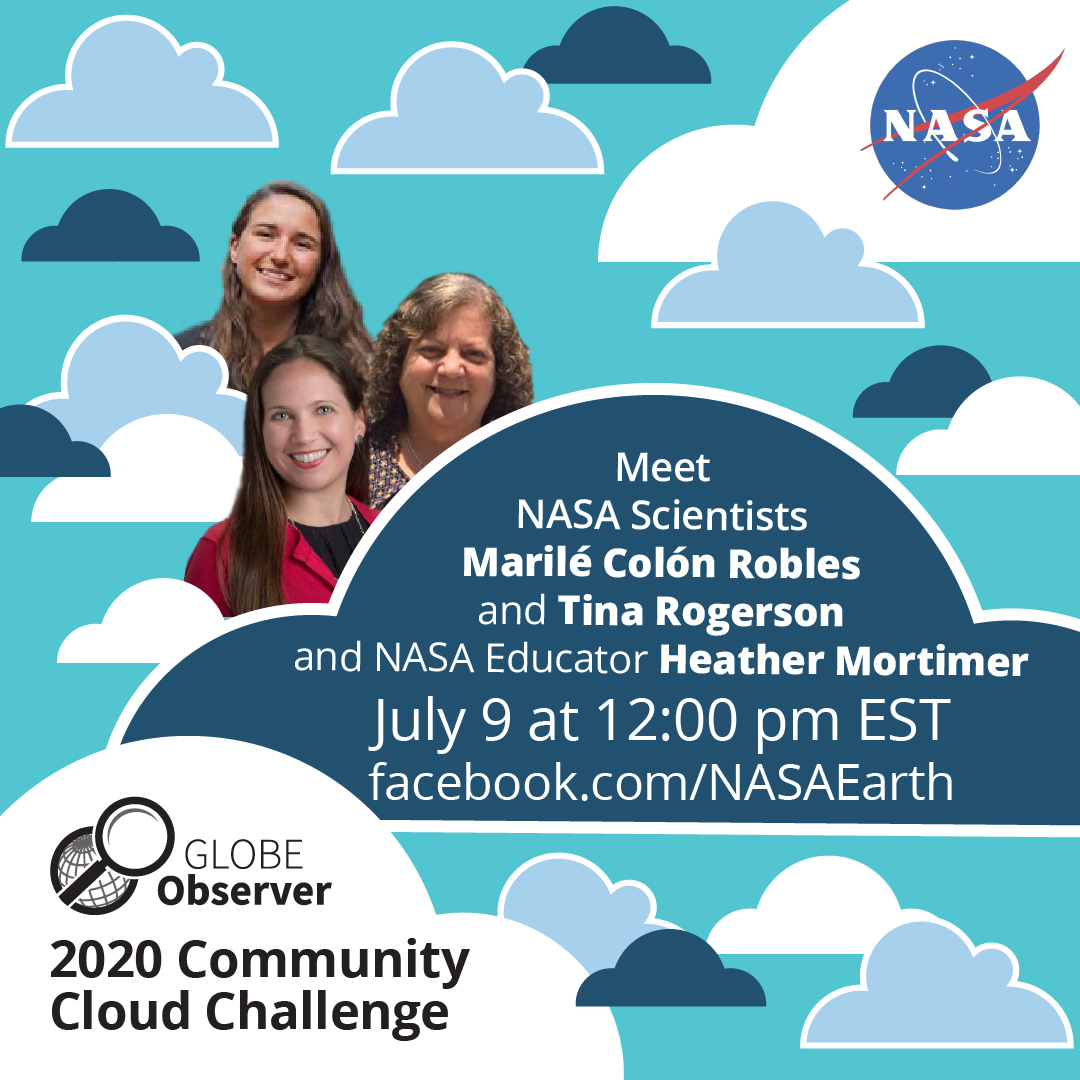
Marilé Colón Robles (GLOBE Clouds project scientist, NASA Langley Research Center) and Tina Rogerson (scientific programmer and GLOBE Clouds data manager, NASA Langley Research Center) share why satellite matches to GLOBE cloud observations are important and how they are done.
Get to know more about them! Marilé, born and raised in Puerto Rico, loves volleyball and music. A Poquoson, VA native, Tina loves going to the beach and solving puzzles.
At-Home Activity: Reading a Satellite Match Table
Join Heather Mortimer (GLOBE Observer graphic designer and science writer, NASA Goddard Space Flight Center) as she walks through her own cloud observations and satellite matches. To do this activity, all you need is to make a cloud observation through GLOBE or using the GLOBE Observer app during a satellite flyover time and use the satellite match table you receive.
Science Topic: What is Citizen Science?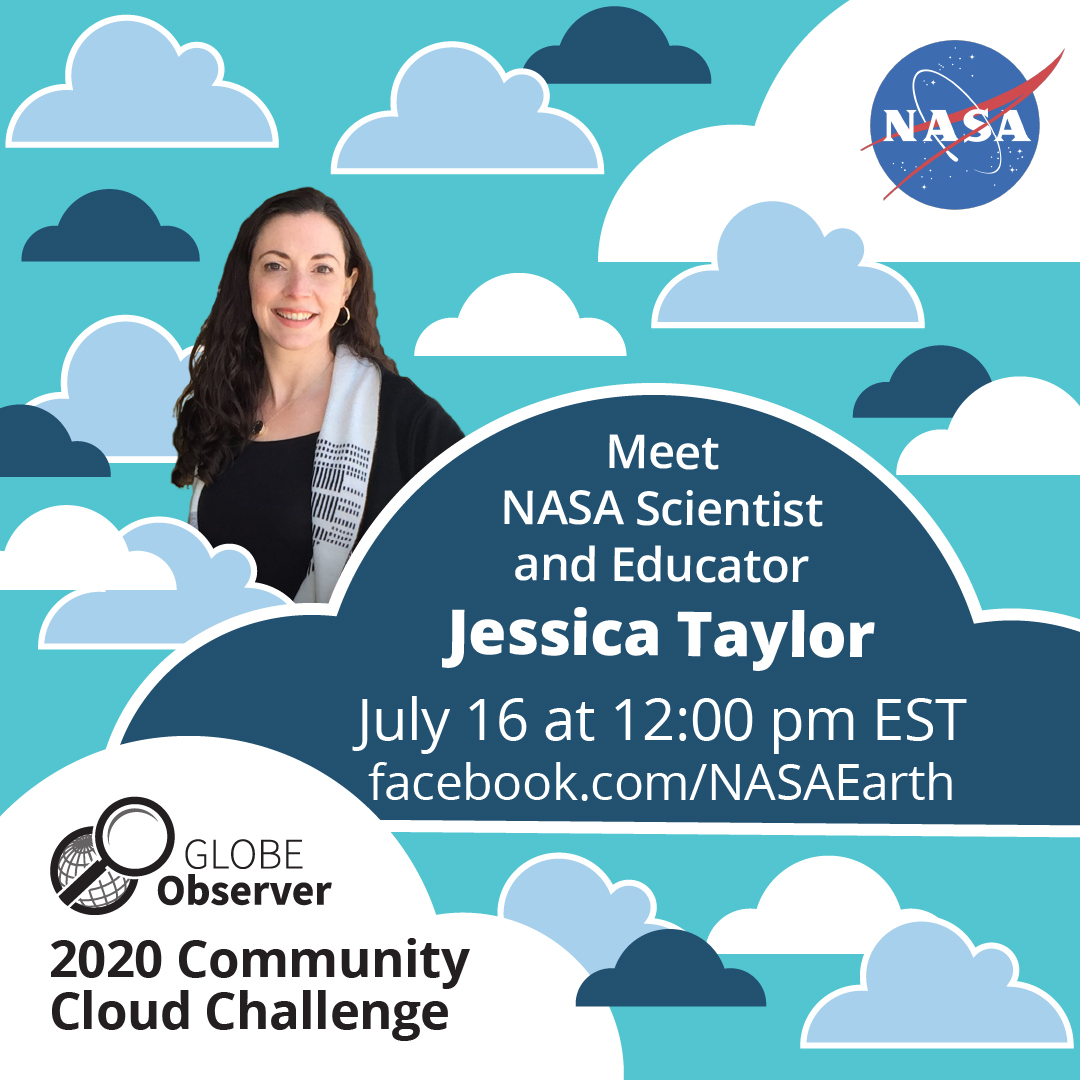
Jessica Taylor (atmospheric scientist and principal investigator for GLOBE Clouds, NASA Langley Research Center) will share how she started in GLOBE as a student and her path to NASA. Learn more about citizen science and why is it important for NASA. Jessica is a former Latin dance instructor who grew up in Florida and in Mexico, and loves reaching out to students all around the world.
At-Home Activity: Cloud Cover Estimation
Join Jessica and her two daughters as they try out the Cloud Cover Estimation activity. To do this activity, you will need paper (white and blue), scissors, glue or tape, and a marker or pencil.
Science Topic: Clouds and Weather from 22,000 miles away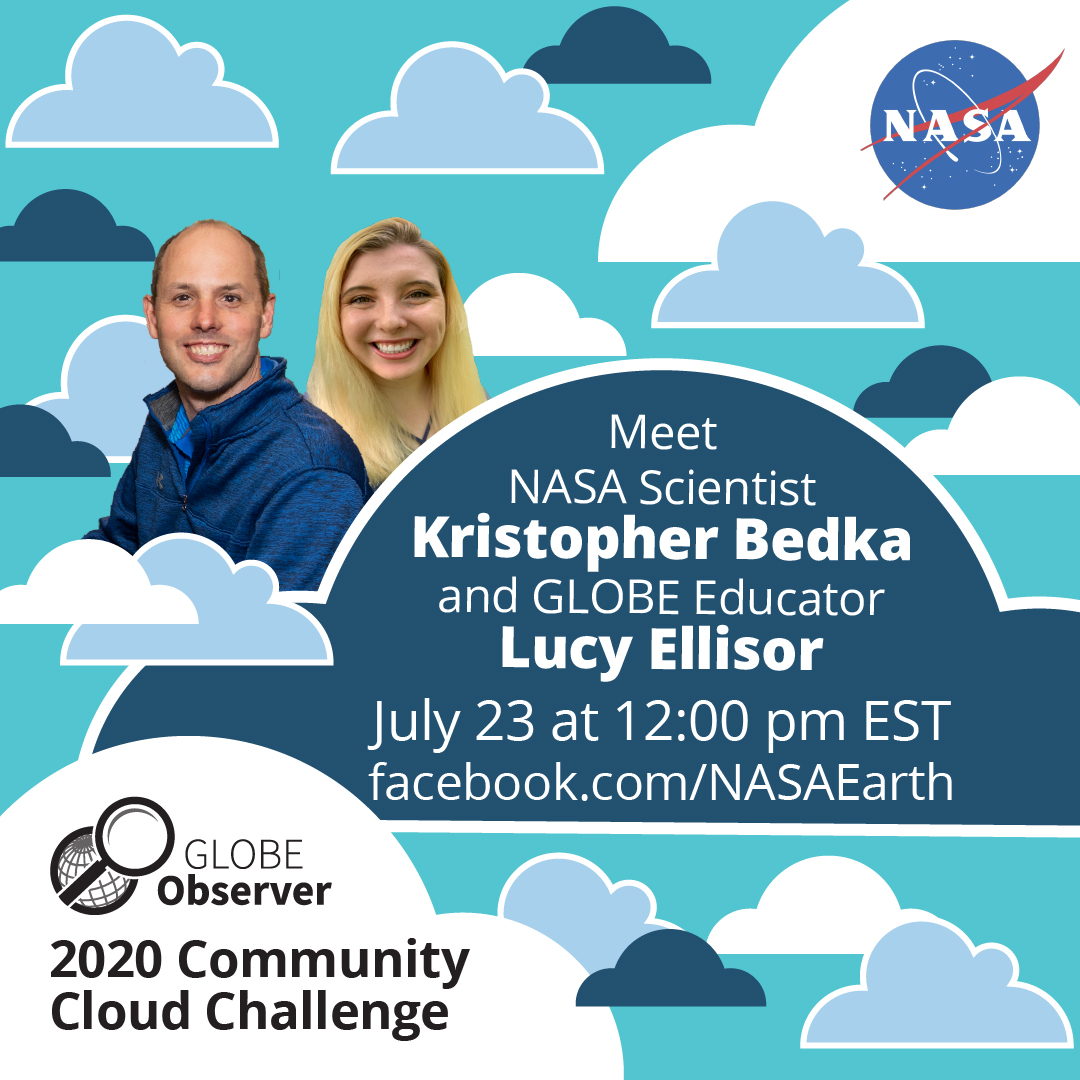
Kris Bedka (atmospheric scientist, NASA Langley Research Center) will teach us how clouds relate to weather and how data from geostationary satellites are used to study clouds. Kris, a Chicago native, enjoys sports, gardening and landscaping, and eating ethnic foods.
At-Home Activity: Cloud in a Jar
Join Lucy Ellisor (camp counselor for Camp Discovery in Blythewood, SC) and her brother Deon as they do the Cloud in a Jar activity. To do this activity, you will need warm water, a metal tray or cookie sheet, ice, a see-through jar, and a match.
Science Topic: Clouds and Earth’s Climate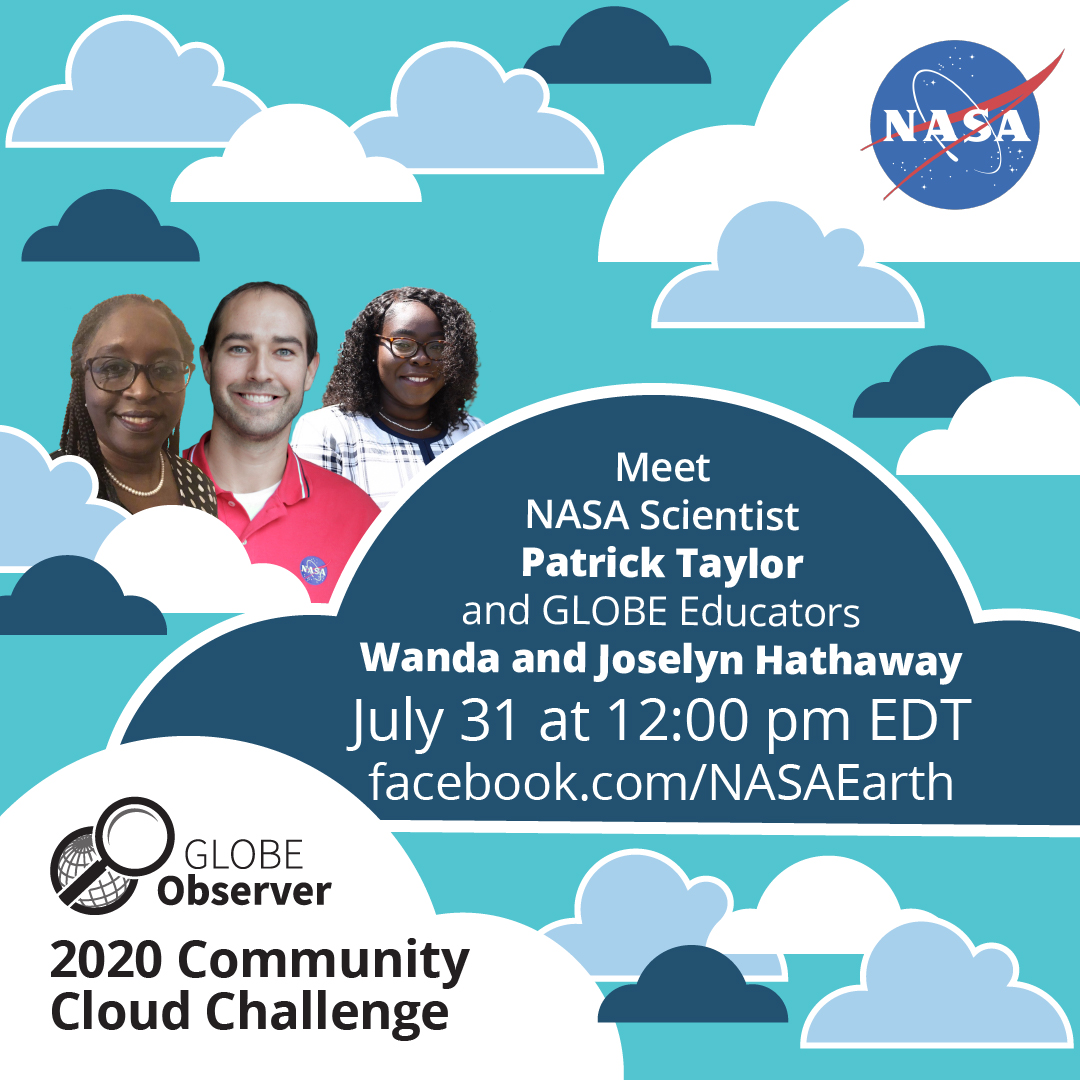
Patrick Taylor (atmospheric scientist, NASA Langley Research Center) will discuss how he studies clouds to look at our changing climate and analyzes data from Low Earth Orbit satellites. Patrick started his passion for weather when he was in fourth grade at Greenwood Elementary School in Millerstown, Pennsylvania.
At-Home Activity: Cloud Clues (Opacity)
Join the mother and daughter duo of GLOBE educators Joselyn Hathaway (River Road Middle School in Elizabeth City, NC) and Wanda Hathaway (Churchland Middle School in Portsmouth, VA) as they do the SciGirls’ cloud clues activity. For this activity, you will need to a transparent item (like cellophane or a bottle full of water), translucent items (like wax paper or tissue paper), opaque items (like construction paper or aluminum foil), a light source and white paper.
Science Topic: Aerosols and Air Quality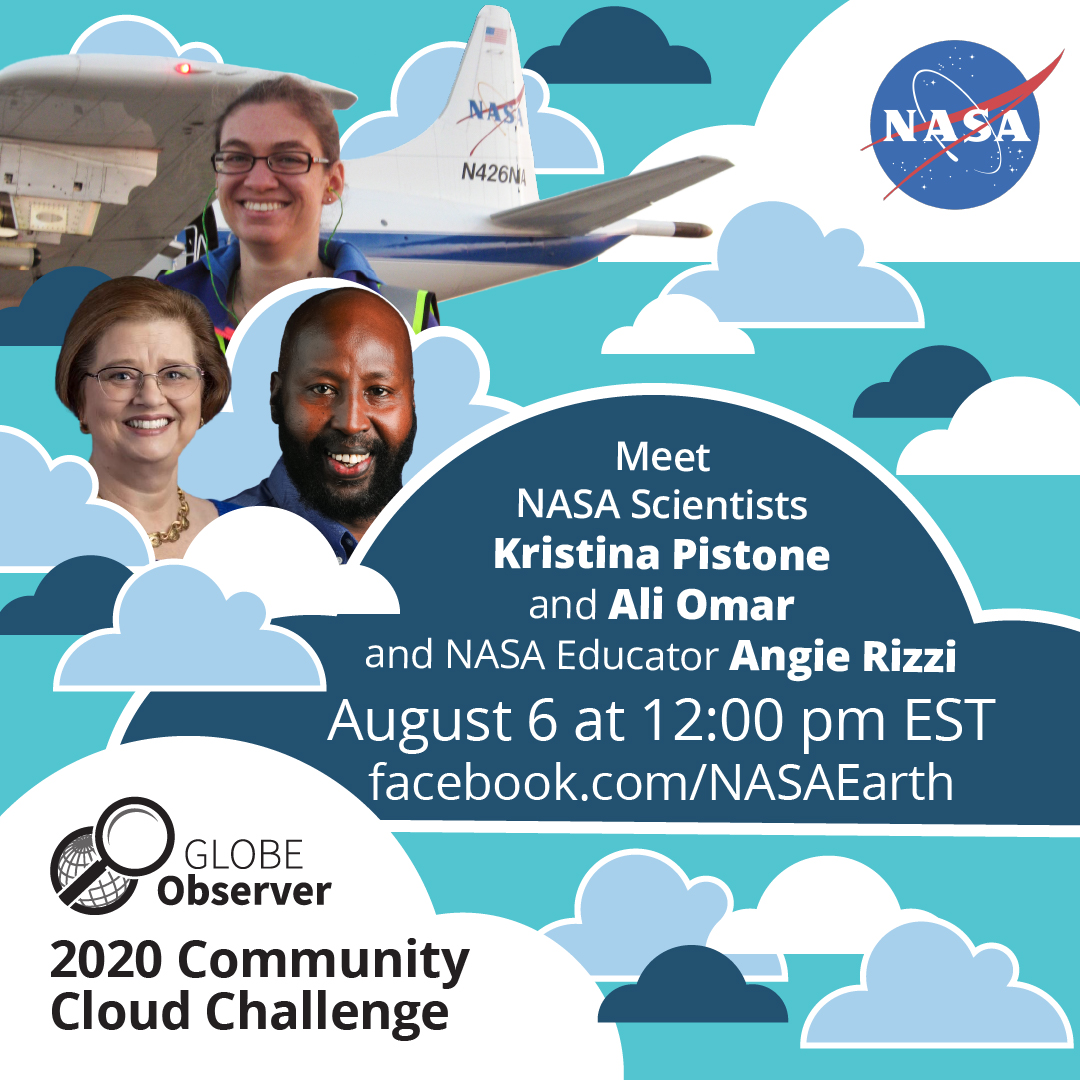
Kristina Pistone (research scientist, Bay Area Environmental Research Institute at NASA Ames Research Center) will talk about aerosols, why NASA studies them, and how they are related to clouds.
At-Home Activity: Up In The Air (Aerosol Sampler)
Join Angie Rizzi (science educator, NASA Langley Research Center) as she makes an aerosol sampler from the Up In The Air activity, part of the Elementary GLOBE storybooks series. Ali Omar (atmospheric scientist, NASA Langley Research Center) will talk about the types of aerosols you can see and cannot see with your eyes. To do this activity, you will need a copy of the student activity sheet, clear contact paper or tape, a piece of cardboard, a magnifying glass, and a six-sided die.
Science Topic: The Impact of Your Observations in Research
J. Brant Dodson (atmospheric scientist, NASA Langley Research Center) will explain the power of citizen science observations and how GLOBE and GLOBE Observer cloud observations are being used in his research.
At-Home Activity: Cloud Fun (Cloud Journal)
Join GLOBE educator Veshell Lewis (Jackson Public Schools and University of Southern Mississippi) as she does the Cloud Fun activity that is part of the Elementary GLOBE books series. For this activity, you will need the free Elementary GLOBE storybook Do You Know That Clouds Have Names?, paper, the GLOBE cloud chart, newspaper, white paper, glue or glue sticks, markers or pencils, and the Cloud Fun activity sheet.
Playlist of Previous Videos:
Choose Your Participation Options:
Learn about clouds:
- Explore clouds data in the GLOBE Visualization System.
- Watch the "GLOBE Observer: Clouds - Getting Started" video
- Check out the GLOBE Observer Clouds Science page or the NASA GLOBE Clouds page.
- Read an Earth Observatory article about clouds
- Learn more about cloud opacity with "Cloud Clues" (versión en español, "Pistas en las Nubes")

Create with clouds:
The weekly Cloud Challenge video will feature an activity related to the topic discussed by the NASA scientist, and we have some additional suggestions below. If you're looking for even more activities, check out our full Clouds Resource Library.
- Make cloud art
- Create a "Cloud in a Jar" (versión en español, "La Nube en un Frasco")
- Create a cloud collage and practice estimating cloud cover (versión en español, practicar la estimación de la cobertura de nubes)
- Construct an aerosol sampler with the “Up in the Air” activity (versión en español, "En el Aire")
- Contribute to a show for the Fiske Planetarium

Engage with the cloud observer community:
As you complete activities or take observations, share your results with us through social media using #CloudChallenge or by tagging GLOBE.
- Tell a friend about your favorite type of cloud
- Create a GLOBE team
- Share your favorite cloud photo with a friend or on social media
- Tell why you love science with a friend or on social media
- Follow GLOBE on social media:
Observe clouds:
As you're taking cloud and sky observations, be sure to think safety first! Just like NASA scientists, we ask that you always be safe and follow your local regulations. Taking observations is optional for this event. Help by submitting clouds, dust, haze or smoke observations to GLOBE using any of GLOBE’s data entry tools including the Clouds tool on the GLOBE Observer mobile app. GLOBE welcomes citizen scientists, educators, students and STEM professionals. Create an account on the GLOBE Getting Started page or in the GLOBE Observer app.
- Download the GLOBE Observer app
- Take a Clouds observation
- Take an observation during a satellite flyover (read more about how the satellite comparison works, versión en español sobre la correspondencia con el satélite)
- Take 10 observations with the GLOBE Observer app
- Start a nature journal (for a simple place to start, try the "Cloud Fun" activity, versión en español "Diversión con Nubes")










